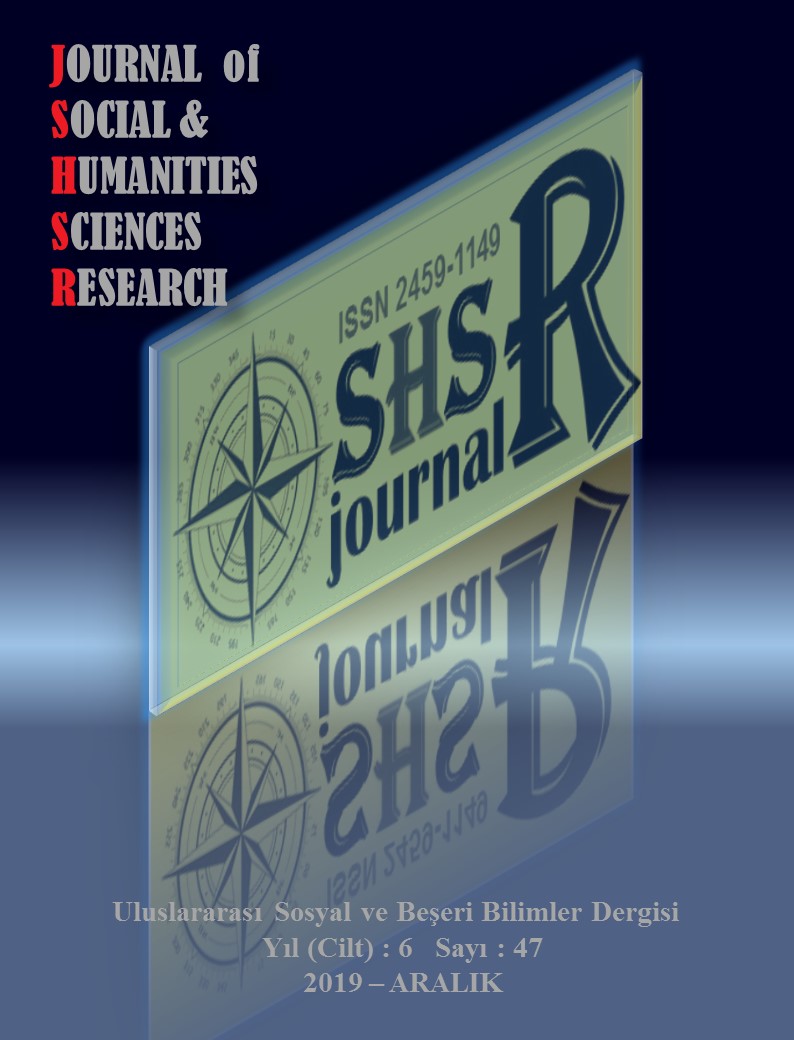DANALI HAYRET EFENDI'S SEYHAN POEM
DOI:
https://doi.org/10.26450/jshsr.1637Keywords:
Adanali Hayret Efendi, Seyhan Manzumesi, Ottoman PoetryAbstract
Hayret Efendi, who is known with his unique personality by the ones around him is mostly known as ‘Adanalı Hoca Hayret’.
He came into the world in 1848 in Adana. Took the first lessons of his academic life in Adana, from the city’s important
teachers. From the beginnings of his education, he especially learned Arabic and Persian well. In order to push his education
forward, he came to Istanbul and continued his studies in madrasah. Passing all of the exams that are necessary for teaching
with success, he got to earn the diploma from Dârü’l-Muallimîn. Hayret Efendi who became a teacher in this way started his
life as a teacher in Adana. In 1871, he got assigned to Adana Rüşdî Mektebi as an educator. His reputation towards his
environment starts to increase after his educational background in Istanbul too. Because he was a good educator, he gets
employed to teach the children of governmental executives. There are also the children of ministers among the children he was
teaching. From these, the Courthouse Minister tutored Damat Celalettin Pasha’s sons Prince Sabahattin and Prince Lutfullah.
He is known for his habit of not appreciating the ones around him easily and prioritizing himself. One of his personality’s
important or more precisely different aspects is that he prioritizes himself as much as he prioritizes the people he was composing
tribute poems too. He highlighted the concept of pan-islamism in his works. There is a novel personality trait of Hayret Efendi.
He lived in Istanbul until the end of his life. He uttered the longing of his to Adana and Adana’s tablelands in the time of him
being in Istanbul. Even when he went to tour the best places in Istanbul, to tell about the beauties of the places he liked the
most, he continuously went to use the way of comparing the beauties of those places with Adana’s tablelands. His works are,
Eş’âr-ı Hayret, Şehrâyîn ve Sihr-i Beyân, Mir’ât-ı Bedâyi’, Mesnevî-i Hayret Efendi (Şehrâyîn) and Sûk-ı Ukâz. In our study,
Seyhan Manzumesi which constitutes the subject of our study will be analyzed and Hayret Efendi’s longing to Adana and his
family and folks who he left behind will be explained according to the poem itself.
Downloads
Published
How to Cite
Issue
Section
License
Copyright (c) 2019 INTERNATIONAL JOURNAL OF SOCIAL HUMANITIES SCIENCES RESEARCH

This work is licensed under a Creative Commons Attribution 4.0 International License.


